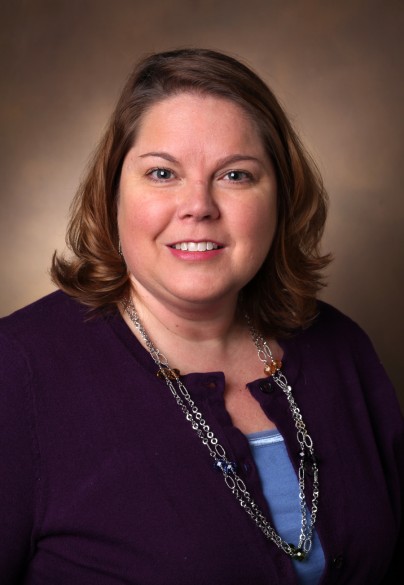By Jenna Somers and Jane Hirtle
Around the world, health care workers are on the front lines of the battle against COVID-19. In the face of personal protective equipment (PPE) shortages, some may innovate makeshift PPE on the fly, sterilizing face masks by baking them after each use, and splitting ventilators between patients. They operate within the confines of split-second decisions, completely immersed in the here and now.

To assist these health care professionals in the trenches of this fight, hospital administrators and policymakers search for answers to tough questions—like how enacting policies that would reapportion ventilators, PPE and other equipment, or delaying elective surgeries and limiting visitors, would affect various outcomes and processes for hospitals.
These concerns were top of mind for Dr. Chevis Shannon, director of the Vanderbilt Pediatric Neurosurgery Clinical Research Initiative, when she contacted the Data Science Institute about developing a short- and long-term readiness model specific to the needs of the Monroe Carell Jr. Children’s Hospital at Vanderbilt. The goal was to address the virus’s impact on policies and procedures—now and in the future—so that Children’s Hospital would be fully prepared to provide the best care to its patients, even as COVID-19 infection rates wax and wane.
Running with the baton passed to them by colleagues at the Department of Health Policy at Vanderbilt University Medical Center, the Data Science Institute’s students and staff are building a model that allows for visualizations and simulations of varying patient loads and possible hospital mitigation policies, such as the deferral of elective surgeries, resterilization of PPE, and additional staffing. Whereas the model created by the Department of Health Policy provides projections for overall patient counts, it does not forecast the capacity of individual hospitals or the impact of possible hospital policies or mitigations. Complementing one another, these models will provide a more comprehensive picture of COVID-19 impacts, greatly facilitating hospitals in making critical decisions to maximize resources.

“We are witnessing an incredibly challenging and unprecedented time for the health care industry,” said Chief Data Scientist Jesse Spencer-Smith. “That is why at the Data Science Institute, we are eager to partner with colleagues at Vanderbilt University Medical Center to help optimize resources.”
Prior to joining Vanderbilt last year, Spencer-Smith served as director of data science for HCA Healthcare. While there, he led a team of data scientists who leveraged the power of statistical modeling and machine learning techniques to inform clinical, operational and business decisions. Now he leads Vanderbilt’s data scientists and data science master’s students as they engage in essential work to create a COVID-19 readiness plan for Children’s Hospital.

“This project involves all of the data scientists at the Data Science Institute, as well as geospatial mapping experts in the Vanderbilt Research IT Service and the Jean and Alexander Heard Libraries. It also allows our master’s students to collaborate on work that is of paramount importance,” said Douglas Schmidt, Cornelius Vanderbilt Professor of Engineering and co-director of the Data Science Institute. “This is an opportunity for these young data scientists to develop their skills and have a tangible impact on addressing COVID-19.”
Stakeholders involved in the project include:
- Chevis Shannon, research professor of neurological surgery at Vanderbilt University Medical Center;
- Alyssa Wiseman, research manager of pediatric neurosurgery at Monroe Carell Jr. Children’s Hospital at Vanderbilt;
- Stephen Gannon, operations, research and project implementation director of the Surgical Outcomes Center for Kids (SOCKs) at Children’s Hospital;
- Michelle Aebi, research manager of pediatric craniofacial and plastic surgery at Children’s Hospital;
- Douglas Schmidt, Cornelius Vanderbilt Professor of Engineering and co-director of the Data Science Institute;
- Jesse Spencer-Smith, chief data scientist at the Data Science Institute;
- Charreau Bell, senior data scientist at the Data Science Institute;
- Ben Lane, data scientist at the Data Science Institute;
- Lindsey Fox, senior IT consultant for Research at Vanderbilt University;
- Stacey Curry-Johnson, librarian for Geospatial Data and Systems at Vanderbilt University.
VU Infection and Hospital Capacity Needs Model:
- John Graves, associate professor of health policy and director of the Center for Health Economic Modeling;
- Melissa McPheeters, research professor in the Department of Health Policy and co-director of the Center for Improving the Public’s Health Through Informatics;
- Melinda Buntin, Mike Curb Professor of Health Policy and chair of the Department of Health Policy.
Shawn Garbett, assistant in biostatistics in the Department of Biostatistics, and Peter Rebeiro, assistant professor of medicine and biostatistics at Vanderbilt University Medical Center, provided statistical epidemiological support to the team, which also received input from Vanderbilt’s Health Policy and Public Health Advisory Panel.
Interested in partnering with the VU Data Science Institute? Learn more at vanderbilt.edu/datascience.